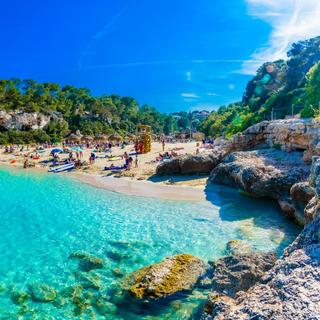
Spain climate

Spain climate
Tourist destinations in Spain
Weather charts for Spain
Cities in Spain
We make the most from 40 years of historical weather data to predict the best weather conditions.
Deciding on where to go for a holiday is hard sometimes. Get inspired by the most popular destinations.
We aggregate data from combining multiple weather sources to ensure accuracy of the highest order.









Spain climate
Tourist regions in Spain, according to their climate, could be divided into 9 different areas, which have different climates. These are Canary Islands, Andalusia, Murcia, Valencia, Balearic Islands, Catalonia, Central Spain, Galicia, North Spain. The selection of these regions covers the most visited areas according to our surveys, on the other hand, there could be nice places to see also outside of our selected regions.
Canary Islands is the region with the highest temperatures in Spain. During July - October day temperatures of 26 °C (79 °F) - 28 °C (83 °F) are expected.
On the other hand, the climate of Galicia is coldest with temperatures between 12 °C (54 °F) - 13 °C (56 °F) during the months of December - February.
The highest sea temperatures in Spain could be found in Canary Islands, where the sea temperature in July - November will be around 22 °C (71 °F) - 23 °C (74 °F).
The least cloudy region in Spain is Andalusia with 76 % of sunshine a day during its sunniest months June - August.
The region with the most sun hours (without clouds) during a day is Andalusia, which enjoys 11 hours in June - August.
Spain has the windiest region and it is Canary Islands with an average level of wind 6 during June - July.
During the night and the morning, the region with the highest temperature is Canary Islands, which has night temperatures between 18 - 20 in the period of July - November.
Regions with just a few days of precipitation, which means regions with a dry climate, are following: Canary Islands, Andalusia, Murcia, Valencia, Balearic Islands, Catalonia, Central Spain.








